Browsing This
Gallery: Scribbling Computing From 1888 to 2010
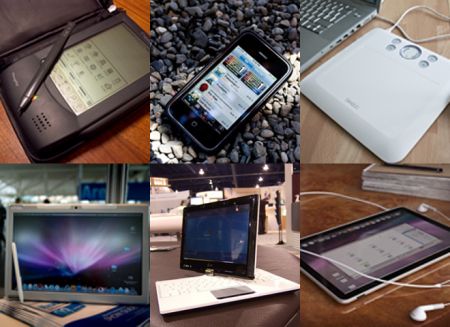
The word “tablet” used to refer to a flat slab for bearing an inscription. Leave it to the tech industry to make it into something far more complicated and confusing.
Scores of products marketed as “tablets” have come and gone, and now — with rumors of imminent tablet computers from Apple , Dell , Microsoft and others — the category seems ripe for a rebound.
“If people can figure out a new device category that consumers will want to buy that isn’t a laptop or a phone, that opens a whole new possibility in markets to conquer,” explains Michael Gartenberg, a tech strategist with Interpret. “That’s why companies continue to invest in this space, and we have a large number of bodies that are littered in this space.”
Let’s take a look at tablets past, present and future. If the upcoming tablets are to succeed, they’ll need to learn from hideous mistakes like the Apple Newton and the Tablet PC.
Origins
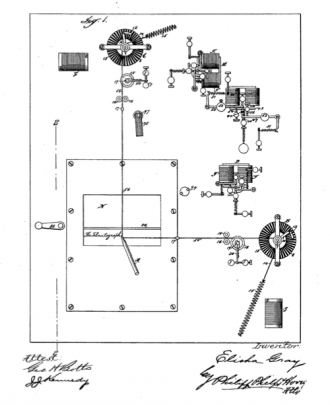
The origins of the tablet computer can be traced as far back as the 19th century. Electrical engineer Elisha Gray registered an 1888 patent (.pdf) describing an electrical-stylus device for capturing handwriting. Famous for his contributions to the development of the telephone, Gray’s idea with a “tablet” was not for drawing, but rather a method of using telegraph technology to transmit handwritten messages. (Think of it as a primitive form of instant messaging or e-mailing.)
Gray’s concept wasn’t merely a flat slab. His patent depicts two instruments: a transmitter and a receiver. The transmitter is a pen-like device connected to two electric circuits acting as interruptors. Current interruptions are used to translate the transmitter pen’s movements into signals transmitted to the receiver pen to mimic the movements, thereby reproducing the message on a piece of paper.
This description hardly sounds anything like a tablet, but later electronic-handwriting-recognition patents built from the idea of transmitting and receiving instruments, eventually combining them into one slab-shaped device like the tablets we see today.
The Apple Newton
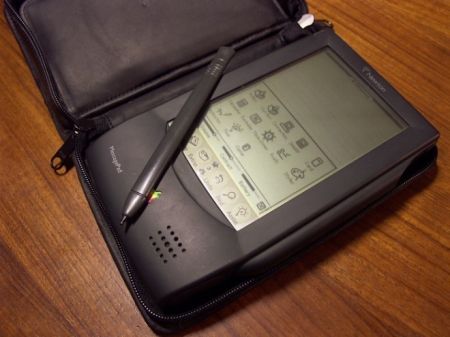
The Newton MessagePad (above) was the first attempt by a major computer company at producing a commercial tablet-type computer for the mass market. Weighing in at about two pounds, Apple ’s 1993 foray into tablet computing sported a powerful-for-its-time 20 MHz processor and a pen-centric interface. Writing recognition in the first version was so bad that it was famously mocked in a Doonesbury cartoon, and though it subsequently improved, the Newton never recovered from the initial PR blow. In 1998, Apple discontinued the Newton when Steve Jobs retook the helm as CEO, leaving a small coterie of true believers to keep the product’s memory alive.
PDAs and Smartphones
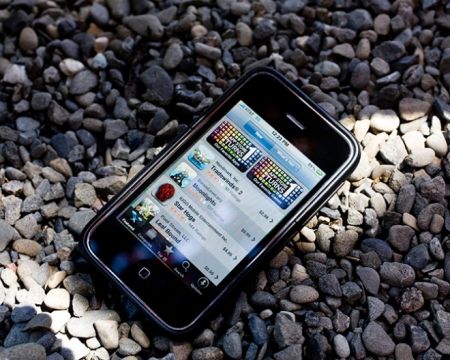
While no one refers to their iPhone as a “pocket tablet,” these devices are an important stage in the development of tablet computers.
Palm founder Jeff Hawkins learned from Apple ’s mistakes and set out to build a pocket-sized computer that was smaller, cheaper, more modest in its ambitions and ultimately more useful than the Newton. He succeeded wildly with the 1996 launch of the Palm Pilot, spawning a long line of pen-based personal digital assistants from Palm , HP, Dell and others.
When Apple returned to the touchscreen world with the iPhone in 2007, it showed that it had paid close attention during the decade since the Newton flopped. The iPhone was simple, small, elegant and did a handful of things — make calls, browse the web, handle e-mail — very well. The fact that it wasn’t an all-purpose portable computer didn’t seem to matter so much compared to its usability and design.
Graphics tablets
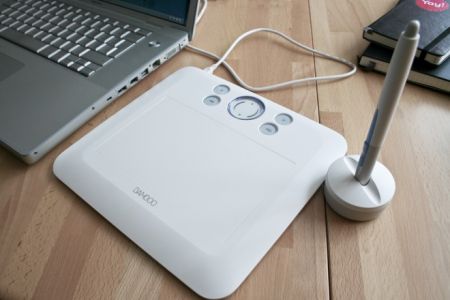
Graphics tablets are computer input devices with a stylus-controlled interface. The technologies used vary, but generally all graphic tablets use the received signal to determine the horizontal and vertical position of the stylus, distance of the stylus from tablet surface and the tilt (vertical angle) of the stylus. Popular among digital illustrators, tablets facilitate a natural way to create computer graphics, especially 2-D illustrations.
Given their specialty, graphics tablets fill a niche for digital artists. Some consumer applications include writing Chinese, Japanese or Korean characters, working with handwriting recognition software to transfer them onto the computer . The stylus can also be used as a mouse.
However, for other languages, including English, the majority of consumers prefer typing on a keyboard for speedier writing, according to Gartenberg. Thus, the graphics tablet fills a niche in the design industry, but it is not a major product category in the consumer market. Wacom is the most prominent manufacturer producing graphics tablets today. (Example above: Wacom Bamboo Fun)
Pages: 1 2




